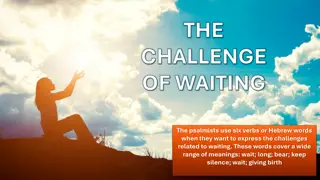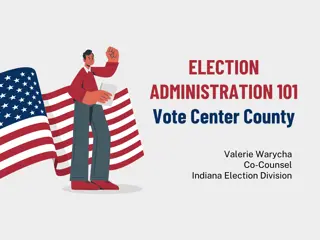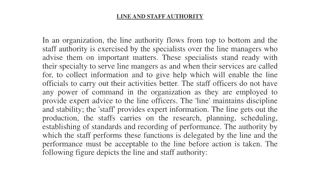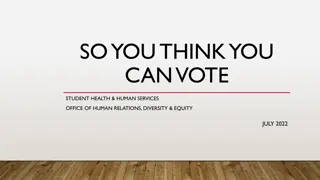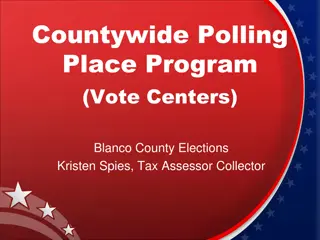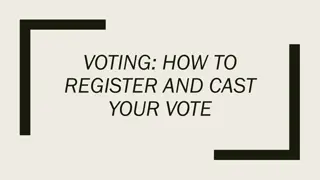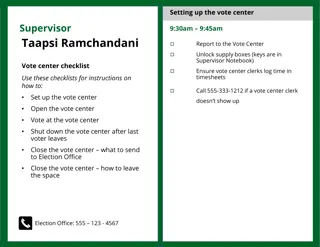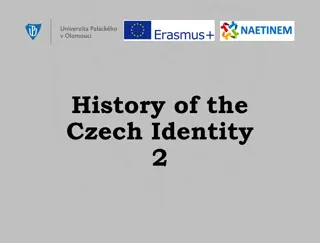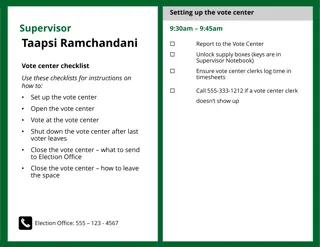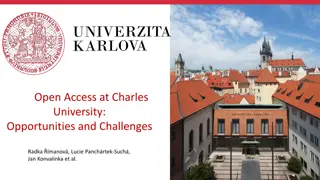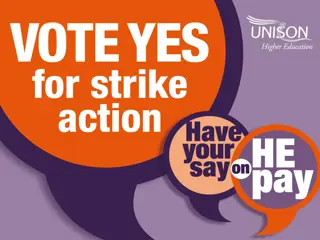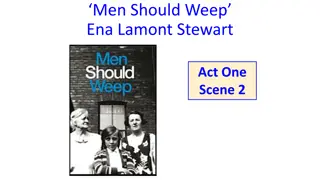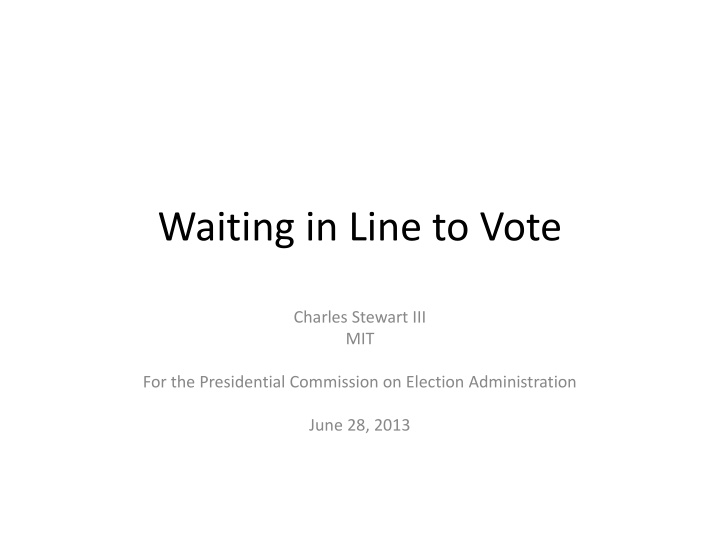
Impact of Long Lines on Voter Confidence and Turnout in Elections
Discover the detrimental effects of long lines on voter confidence and turnout in elections. Research shows how lengthy queues deter eligible voters from exercising their right due to inconvenience, leading to decreased confidence in the voting process. Learn how addressing queue management can enhance voter participation and trust in election outcomes.
Download Presentation

Please find below an Image/Link to download the presentation.
The content on the website is provided AS IS for your information and personal use only. It may not be sold, licensed, or shared on other websites without obtaining consent from the author. If you encounter any issues during the download, it is possible that the publisher has removed the file from their server.
You are allowed to download the files provided on this website for personal or commercial use, subject to the condition that they are used lawfully. All files are the property of their respective owners.
The content on the website is provided AS IS for your information and personal use only. It may not be sold, licensed, or shared on other websites without obtaining consent from the author.
E N D
Presentation Transcript
Waiting in Line to Vote Charles Stewart III MIT For the Presidential Commission on Election Administration June 28, 2013
Lines are costly Lines are not universal Queuing theory helps organize thinking about improvements Research on effective strategies is thin
Long lines discourage voting Voting and Registration Supplement (VRS) of the Current Population Survey 500k eligible voters failed to vote because of inconvenient hours or polling place locations, or lines too long Cooperative Congressional Election Study (CCES) 730k non-voters due to long lines at the polls Survey of the Performance of American Elections (SPAE) 740k non-voters cite lines as a major factor
Long lines discourage voting Voting and Registration Supplement (VRS) of the Current Population Survey 500k eligible voters failed to vote because of inconvenient hours or polling place locations, or lines too long Cooperative Congressional Election Study (CCES) 730k non-voters due to long lines at the polls Survey of the Performance of American Elections (SPAE) 740k non-voters cite lines as a major factor
Long lines can reduce voter confidence Q: How confident are you that your vote was counted as intended?* Election day voters Early voters Waited 10 minutes or less Waited an hour or more Waited 10 minutes or less Waited an hour or more 68% 47% 69% 54% *% saying very confident Source: SPAE 2012
Long lines can reduce voter confidence Q: How confident are you that votes in your county or town were counted as intended?* Election day voters Early voters Waited 10 minutes or less Waited an hour or more Waited 10 minutes or less Waited an hour or more 56% 32% 57% 48% *% saying very confident Source: SPAE 2012
Long lines can reduce voter confidence Q: How confident are you that votes in your state were counted as intended?* Election day voters Early voters Waited 10 minutes or less Waited an hour or more Waited 10 minutes or less Waited an hour or more 46% 23% 43% 34% *% saying very confident Source: SPAE 2012
Long lines can reduce voter confidence Q: How confident are you that votes nationwide were counted as intended?* Election day voters Early voters Waited 10 minutes or less Waited an hour or more Waited 10 minutes or less Waited an hour or more 24% 13% 23% 21% *% saying very confident Source: SPAE 2012
Long lines can reduce voter confidence Q: How confident are you that your vote was counted as intended?* Respondent did not wait at all to vote Five states with shortest lines Five states with longest lines 63% 23% *% saying very confident Source: SPAE 2012
Lines impose monetary costs 13.1 minutes average to vote 105.2 million in-person voters
Lines impose monetary costs 13.1 minutes average to vote 105.2 million in-person voters 23 million hours waiting
Lines impose monetary costs 13.1 minutes average to vote 105.2 million in-person voters 23 million hours waiting $23.67 average hourly earnings
Lines impose monetary costs 13.1 minutes average to vote 105.2 million in-person voters 23 million hours waiting $23.67 average hourly earnings $544 million
Basic Facts 2008 2012 Not at all 36.8% 37.3% Less than 10 minutes 27.6% 31.8% 10-30 minutes 19.0% 18.4% 31-60 minutes 10.3% 8.6% More than one hour 6.3% 3.9% Average (min.) 16.7 13.3 N 18,836 30,124 Source: CCES, 2008 and 2012
Basic Facts 2008 2012 Not at all 36.8% 37.3% Less than 10 minutes 27.6% 31.8% 10-30 minutes 19.0% 18.4% 31-60 minutes 10.3% 8.6% More than one hour 6.3% 3.9% Average (min.) 16.7 13.3 N 18,836 30,124 110 minutes on average Source: CCES, 2008 and 2012
Basic Facts 2008 2012 Not at all 36.8% 37.3% Less than 10 minutes 27.6% 31.8% 10-30 minutes 19.0% 18.4% 31-60 minutes 10.3% 8.6% More than one hour 6.3% 3.9% Average (min.) 16.7 13.3 N 18,836 30,124 31% of total time waiting Source: CCES, 2008 and 2012
Geography of Waiting 40 Avg. minutes waiting to vote 30 20 10 0 VT SD ME DE NJ NM CT MA NV ID CO PA ND UT RI MO MT IL IN NC LA OK SC DC FL AK WY NE IA MN HI CA MS KY WI AZ AL OH NH KS WV TX NY AR TN GA MI VA MD Source: CCES and SPAE, 2012
Geography of Waiting Source: CCES and SPAE, 2012
Variation within States Source: CCES and SPAE, 2012
Variation within Counties Source: Broward County SOE Web site
Variation within Counties 14 min Source: Broward County SOE Web site
Variation within Counties 14 min 157 min. Source: Broward County SOE Web site
Variation within Counties 86 74 58 14 min 157 min. 65 44 48 77 88 26 61 51 61 100 Source: Broward County SOE Web site 128 46
State-Level Persistence 50 40 MDFL 30 VA SC 20 MI OK GA LA AR TN NC IN NY IL WV TX MT MO KS RI 10 NH UT OH ND AL 2012 PA AZ 8 WICO ID MS NVKY 7 MA CTCA HI NJMN NM 6 IA 5 NEDE 4 ME WY SD 3 AK 2 VT 1 2 3 4 5 6 7 8 20 30 40 50 1 10 2008 Source: CCES and SPAE, 2012
The Demography of Waiting Early voters = 18 minutes Election Day voters = 12 minutes Source: CCES, 2012
The Demography of Waiting Race Avg. White 11.6 Black 23.3 Hispanic 18.7 Asian 15.4 Native American 13.3 Mixed 13.6 Other 13.3 Middle Eastern 11.7 Source: CCES and SPAE, 2012
The Demography of Waiting 10 9.5 9.5 8 7.1 7.7 Black - White gap in minutes 6 5.0 4.7 4 2 0.8 0.8 0 No controls State County ZIP code Controls
Queuing Theory Prescriptions Reduce the number of voters coming to the polling place Increase the number of service points Reduce average transition times .
Queuing Theory Prescriptions Reduce the number of voters coming to the polling place Increase vote-by-mail Increase early in-person voting Make Election Day a holiday Increase the number of service points Increase the number of precincts Increase the number of poll workers Increase the number of machines Favor paper over DREs Reduce average transaction times Increase information to voters Increase the functionality of electronic poll books Decrease the length of ballots
Queuing Theory Prescriptions Reduce the number of voters coming to the polling place Increase vote-by-mail Increase early in-person voting Make Election Day a holiday Increase the number of service points Increase the number of precincts Increase the number of poll workers Increase the number of machines Favor paper over DREs Reduce average transaction times Increase information to voters Increase the functionality of electronic poll books Decrease the length of ballots The empirical evidence suggests the opposite
Queuing Theory Prescriptions Reduce the number of voters coming to the polling place Increase vote-by-mail Increase early in-person voting Make Election Day a holiday Increase the number of service points Increase the number of precincts Increase the number of poll workers Increase the number of machines Favor paper over DREs Reduce average transaction times Increase information to voters Increase the functionality of electronic poll books Decrease the length of ballots Mixed research evidence/ popular reform
Queuing Theory Prescriptions Reduce the number of voters coming to the polling place Increase vote-by-mail Increase early in-person voting Make Election Day a holiday Increase the number of service points Increase the number of precincts Increase the number of poll workers Increase the number of machines Favor paper over DREs Reduce average transaction times Increase information to voters Increase the functionality of electronic poll books Decrease the length of ballots The trend has been the opposite
Queuing Theory Prescriptions Reduce the number of voters coming to the polling place Increase vote-by-mail Increase early in-person voting Make Election Day a holiday Increase the number of service points Increase the number of precincts Increase the number of poll workers Increase the number of machines Favor paper over DREs Reduce average transaction times Increase information to voters Increase the functionality of electronic poll books Decrease the length of ballots Emerging literature on machine allocation
Queuing Theory Prescriptions Reduce the number of voters coming to the polling place Increase vote-by-mail Increase early in-person voting Make Election Day a holiday Increase the number of service points Increase the number of precincts Increase the number of poll workers Increase the number of machines Favor paper over DREs Reduce average transaction times Increase information to voters Increase the functionality of electronic poll books Decrease the length of ballots Appears to be happening for other reasons
Queuing Theory Prescriptions Reduce the number of voters coming to the polling place Increase vote-by-mail Increase early in-person voting Make Election Day a holiday Increase the number of service points Increase the number of precincts Increase the number of poll workers Increase the number of machines Favor paper over DREs Reduce average transaction times Increase information to voters Increase the functionality of electronic poll books Decrease the length of ballots 8-12 secs./item
Conclusions No magic bullet, like 2000 Chronic and one-off events are likely different. Understand why states with similar demographics have wildly different line lengths (Calif. [7 min.] vs. Fla. [39 min.]) Support efforts to help local governments deal with normal challenges

